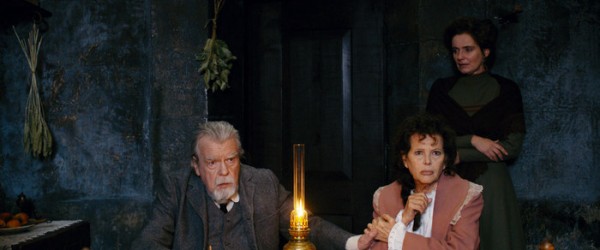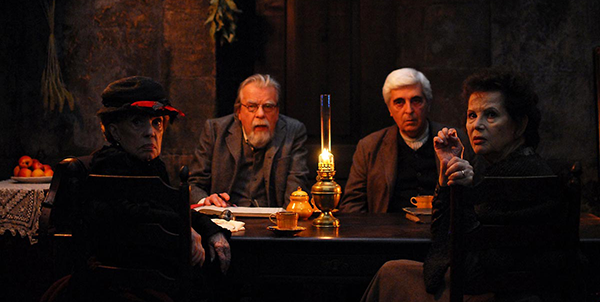
VIFF 2013 Review – Gebo and the Shadow
Film, ReviewsManoel de Oliveira’s latest film Gebo and the Shadow is an adaptation of a play by Raul Brandão. The narrative chiefly revolves around four characters: Gebo, his wife, his daughter-in-law, and his son whose appearance forms the climax.
The film takes place entirely in a late-nineteenth century home where the family discusses the disappearance of their son. Using long shots and a still camera, the film begins with dialogue that establishes the circularity of their lives, and the importance of their son’s whereabouts and sightings, signifying a period of waiting in a similar style to Samuel Beckett’s Waiting for Godot.
When the son arrives, he boasts of his adventurous life, and accuses his family of leading comfortable and repetitive lives. His character works to compare and contrast the man’s role in the family. Gebo lives a life of duty and loyalty for the family; adding accounts at the end of the day, bringing home bread and money, ensuring everyone is happy, while his son prioritizes excitement and living life on the edge.
The film felt redundant and boring at times, even though the intention may have been to recreate the mood and experience of the family. But there were just enough questions for the viewer to remain interested, despite the static scenes.
As a younger member of the audience, I immediately empathized with the son, but later felt sympathy for the elderly Gebo and his wife. The startling conclusion forces the viewer to draw a comparison between the son and father, provoking questions of duty, and whether or not either of their ways of living can be justified.
Despite the beautifully framed long scenes and lighting, which created intimacy, Gebo and the Shadow seems to have let the importance of the play surpass that of the medium of film. The gentle existentialism and comparison of generations makes Gebo and the Shadow worth watching with parents—if you can all be open enough to see yourselves in the characters.
Gebo and the Shadow plays on October 7th, 10 a.m., at Vancity Theatre.























